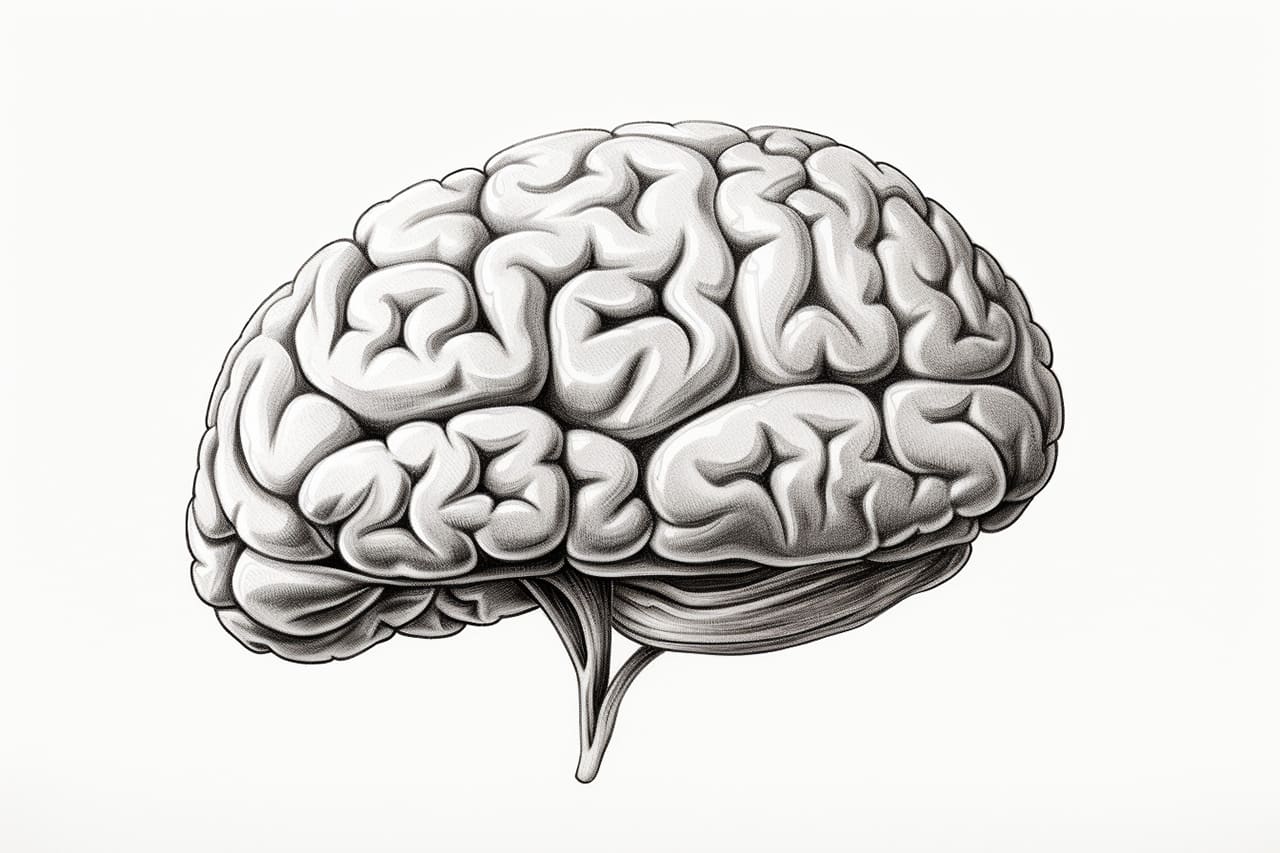The brain is a fascinating organ with complex structures and functions. Drawing a brain can be a challenging yet rewarding experience, allowing you to understand its intricacies better. In this step-by-step guide, we will explore an approach to how to draw a brain that is both informative and visually appealing. So, let’s sharpen our pencils and get started!
Materials Required
To begin with, gather the following materials:
- Drawing paper
- Pencils (preferably a range of grades from 2H to 6B)
- Eraser
- Fine-tipped pens or markers (optional)
- Reference images of a brain (you can find these online or in anatomy books)
Step 1: Outline the Basic Shape of the Brain
Start by lightly sketching the basic shape of the brain. Remember that the brain is not a perfect oval but has various folds and ridges. Look at your reference images to get a sense of these contours. Use a pencil with a lighter grade (e.g., 2H) to make your initial outline. Keep your lines loose and fluid, as you can refine them later.
Step 2: Add the Major Lobes
Now, let’s add the major lobes of the brain. These include the frontal lobe at the front, the parietal lobe at the top, the temporal lobe on the lower sides, and the occipital lobe at the back. Sketch these lobes based on their approximate positions and sizes. It’s okay if they look rough at this stage, as we will refine them as we progress.
Step 3: Detail the Brain’s Folds and Ridges
The brain is characterized by its distinct folds and ridges called gyri and sulci, respectively. Look closely at your reference images to observe these details. Use your pencil to lightly sketch these folds and ridges on the surface of the lobes. Pay attention to their directions and proportions. Remember, we are still working with loose lines here.
Step 4: Refine the Lobes and Add More Detail
Now it’s time to refine the lobes and add more detail to the brain. Look at your reference images to understand the specific features of each lobe. Gradually darken your lines and define the edges of each lobe. Use a softer pencil grade (e.g., 4B) to add shading and depth to the brain’s surface. Be patient and take your time with this step, as it will greatly enhance the realism of your drawing.
Step 5: Add Cross-Sections
To further illustrate the complexity of the brain, let’s add a few cross-sections. Cross-sections provide a glimpse into the inner structures of the brain. Choose a few strategic points on your brain drawing where you want to depict cross-sections. Draw straight lines, slightly curved or zigzag, to represent the cut sections. Within each cross-section, add some details like neuronal pathways or different brain regions.
Step 6: Shade and Add Texture
To make your brain drawing more lifelike, add shading and texture. Observe the reference images to understand the light source and the resulting shadows. Use your pencil to add darker shading on the areas that are away from the light source. Apply lighter shading or leave blank spaces on areas exposed to the light. Blend your shading using your fingertip or a blending tool to create a smooth transition between light and dark areas.
Step 7: Refine and Add Final Details
In this step, focus on refining your drawing by adding final details. Pay attention to the smaller features of the brain, such as the cerebellum at the lower back and the brainstem at the base. Add any additional gyri and sulci to enhance the overall complexity of the brain. Also, check the proportions of different parts and make any necessary adjustments.
Conclusion
Drawing a brain may seem daunting at first, but with patience and practice, you can create a remarkable representation of this incredible organ. By following these step-by-step instructions, you have learned how to outline the basic shape, add the major lobes, detail the folds and ridges, refine the lobes, add cross-sections, shade and add texture, and add final details. Embrace the opportunity to explore the brain’s structure as you develop your artistic skills. Enjoy the journey of drawing and discovering the wonders of the human brain!









